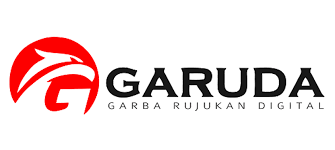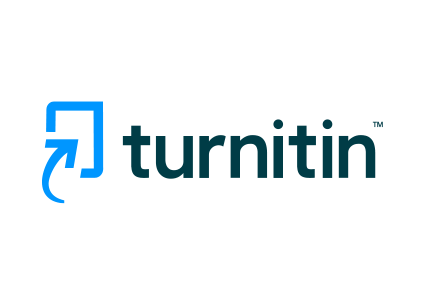STRATEGY FOR DEVELOPING SEAWEEDS STICKS BUSINESS AT SINAR DUNIA INDUSTRY IN SANROBONE DISTRICT, TAKALAR REGENCY
Keywords:
strategy, seaweed, swot analysis, innovationAbstract
Indonesia as an archipelagic country has great potential in the fisheries sector, especially seaweed cultivation which has high economic value and plays an important role in increasing the income of coastal communities. Takalar district in South Sulawesi is a potential area with most of the population relying on seaweed cultivation. However, this business faces various obstacles such as low income, limited information on business profits, to overcome these problems, community empowerment is carried out through training in processing seaweed into value-added products such as seaweed sticks. This research aims to identify strengths, weaknesses, opportunities, and threats and formulate appropriate development strategies to improve the competitiveness of seaweed stick products “Sinar Dunia” using qualitative methods through SWOT and AHP analysis. The results of this study show that the development strategy of Sinar Dunia Seaweed Sticks includes innovating flavor variants and product diversification to expand the market, improving packaging and consumer education through digital marketing, maintaining taste quality and production efficiency to face competition, as well as establishing partnerships with local farmers and including health information on packaging to reduce risk and increase competitiveness. From the above results, it can be concluded that Sinar Dunia Grass Sticks have great potential to be developed through product innovation, improved packaging, digital marketing, and cooperation with local suppliers, and need to overcome market weaknesses and threats in order to compete sustainably.
Downloads
References
Abdillah, A. H. (2023). Analisis SWOT dan AHP Untuk Menentukan Strategi Pengembangan Dalam Persaingan Usaha (Studi Kasus: UD. Duta Sumber Ayem Niaga): Analisis SWOT dan AHP Untuk Menentukan Strategi Pengembangan Dalam Persaingan Usaha (Studi Kasus: UD. Duta Sumber Ayem Niaga). Journal of Research and Technology, 9(2), 211– 220.
Aghasafari, H., Karbasi, A., Mohammadi, H., & Calisti, R. (2020). Determination of the best strategies for development of organic farming: A SWOT – Fuzzy Analytic Network Process approach. Journal of Cleaner Production, 277, 124039. https://doi.org/10.1016/j.jclepro.2020.124039
Alfiana, R. (2023). Usulan Prioritas Strategi Pemasaran Menggunakan Metode Analisis SWOT dan AHP (Studi Kasus UMKM Nuri Snack Desa Pesanggrahan). Universitas Nahdlatul Ulama Al Ghazali. Anggadiredja, J. T., Anggadiredja, J. T., Purwoto, H., & Istini, S. (2011). Rumput laut. Penebar Swadaya.
Batista Pereira, D., Leitão, J., Peirone, D., & Nezghoda, O. (2024). Citation: The Role of the Agglomeration Economy and Innovation Ecosystem in the Process of Competency Development and Growth of Small and Medium-Sized Enterprises.
Brown, R. D., & Petrello, G. J. (1976). Introduction to Business, An Integration Approach. Beverly Hills: Glen Coe Press. DIV Kebidanan UGM, Yogyakarta.
Bryant, C. J., Anderson, J. E., Asher, K. E., Green, C., & Gasteratos, K. (2019). Strategies for overcoming aversion to unnaturalness: The case of clean meat. Meat Science, 154(October 2018), 37–45. https://doi.org/10.1016/j.meatsci.2019.04.004
Cahayani, A. (2016). Karya Ilmiah Peluang Bisinis Kripik Rumput Laut. Diunduh Di: Http://Research. Amikom. Ac. Id/Index. Php/STI/Article/View/8666 Pada Tanggal, 21.
Charismana, D. S., Retnawati, H., & Dhewantoro, H. N. S. (2022). Motivasi Belajar Dan Prestasi Belajar Pada Mata Pelajaran Ppkn Di Indonesia: Kajian Analisis Meta. Bhineka Tunggal Ika: Kajian Teori Dan Praktik Pendidikan PKn, 9(2), 99–113. https://doi.org/10.36706/jbti.v9i2.18333
Choudhary, F., Khandi, S. A., Aadil, R. M., Hassoun, A., Bekhit, A. E. D. A., Abdi, G., & Bhat, Z. F. (2024). Understanding crucial factors in cultured meat production: A comprehensive SWOT analysis. Applied Food Research, 4(2), 100474. https://doi.org/10.1016/j.afres.2024.100474
Darmanto, I. (2017). Penggunaan Analisis SWOT dan AHP untuk Menentukan Strategi Sistem Informasi pada 58 Karpet. Infoman’s, 11(1), 22–30.
Erawati, N. (2023). Skripsi Optimalisasi Strategi Pemasaran UMKM Berkearifan Lokal Menggunakan Metode SWOT dan Analityc Hierarchy Pocess (AHP) (Studi Kasus UMKM Getuk Eco Magelang).
Heikoop, R., Verbraeken, R., Wahyudi, S. I., & Adi, H. P. (2024). Stakeholder engagement in urban water management: A SWOT analysis of the Banger polder system in Semarang. Environmental Challenges, 14 (December 2023), 100831. https://doi.org/10.1016/j.envc.2023.100831
Isma, A., Halim, N., Kemalasari, A. A., Rakib, M., & Dewantara, H. (2024). The influence of entrepreneurship education and technopreneurship literacy on entrepreneurial intention with self-efficacy as an intervening variable in generation z. International Journal of Health, Economics, and Social Sciences (IJHESS), 6(3), 930–940.
Isma, A., Rakib, M., & Halim, N. (2022). Mengembangkan Karakter Entrepreneur Siswa Melalui Pelatihan Kewirausahaan di SMK Negeri 1 Sidrap. Jurnal Inovasi Pengabdian Dan Pemberdayaan Masyarakat, 2(2), 93–104.Kristanto,
V. H. (2018). Metodologi Penelitian Pedoman Penulisan Karya Tulis Ilmiah:(KTI). Deepublish.
Kwilinski, A., Lyulyov, O., & Pimonenko, T. (2023). The Impact of Digital Business on Energy Efficiency in EU Countries. Information (Switzerland), 14(9), 1–19. https://doi.org/10.3390/info14090480
Lee, J., Kim, I., Kim, H., & Kang, J. (2021). SWOT-AHP analysis of the Korean satellite and space industry: Strategy recommendations for development. Technological Forecasing And Social Change, 164 (November 2020), 120515. https://doi.org/10.1016/j.techfore.2020.120515
Lopes, J. M., Gomes, S., Pacheco, R., Monteiro, E., & Santos, C. (2022). Drivers of Sustainable Innovation Strategies for Increased Competition among Companies. Sustainability (Switzerland), 14(9), 1–18. https://doi.org/10.3390/su14095471
Madureira, T., Nunes, F., Mata, F., & Vaz-Velho, M. (2024). A SWOT Analysis of Organizations in the Agri-Food Chain Sector from the Northern Region of Portugal Using the PESTEL and MEETHS Frameworks. Agriculture, 14(9), 1554. https://doi.org/10.3390/agriculture14091554
Mahesa, S. (2024). Analisis SWOT dan AHP Untuk Menentukan Strategi Pengembangan Dalam Persaingan Usaha. UIN Sunan Kalijaga Yogyakarta.
Mnisi, C. M., Oyeagu, C. E., & Ruzvidzo, O. (2022). Mopane Worm (Gonimbrasia belina Westwood) Meal as a Potential Protein Source for Sustainable Quail Production: A Review. Sustainability (Switzerland), 14(9).https://doi.org/10.3390/su14095511
Naufal, A. (2018). Analisis Pendapatan Dan Efisiensi Usaha Tani Rumput Laut Di Desa Kertasari Kecamatan Taliwang Kabupaten Sumbawa Barat. Universitas Muhammadiyah Malang. Fakultas Ekonomi Dan Bisnis.
Obbineni, J., Kandasamy, I., Vasantha, W. B., & Smarandache, F. (2023). Combining SWOT analysis and neutrosophic cognitive maps for multi-criteria decision making: a case study of organic agriculture in India. Soft Computing, 27(23), 18311–18332. https://doi.org/10.1007/s00500-023-08097-w Rajagukguk, M.
M. (2009). Analisis daya saing rumput laut Indonesia di Pasar Internasional.
Rakib, M., & Halim, N. (2024). Development of a Competency-Based Sustainable Business Mentoring Model for Small Businesses. International Journal of Research and Innovation in Applied Science, 9(9), 266–278.
Shaloo, Singh, R. P., Bisht, H., Jain, R., Suna, T., Bana, R. S., Godara, S., Shivay, Y. S.,
Singh, N., Bedi, J., Begam, S., Tamta, M., & Gautam, S. (2022). Crop- Suitability Analysis Using the Analytic Hierarchy Process and Geospatial Techniques for Cereal Production in North India. Sustainability (Switzerland), 14(9), 1–21. https://doi.org/10.3390/su14095246
Soreide, K., Berrevoet, F., Frigerio, I., Gallagher, T., Laukkarinen, J., Gilg, S., Schnitzbauer, A., Stättner, S., Taboada, C. D., Polak, W. G., Siriwardena, A. K., Besselink, M. G., Kerem, M., Sarıbeyoğlu, K., Oliverius, M., Ndoma-Egba, R., Dili, A., Glantzounis, G. K., Gulla, A., & Trotovšek, B. (2024). Benefits and barriers to accreditation of HPB center and fellowship programs in Europe: a strength-weakness-opportunity-and-threats (SWOT) analysis by an E- AHPBA- ESSO-UEMS ad hoc working committee. Hpb, 1254–1260. https://doi.org/10.1016/j.hpb.2024.06.011
Sugiyono, M. (2012). Metode Penelitian Kuantitatif, Kualitatif, dan Kombinasi.
Bandung: Alfabeta.
Sugiyono, P. D. (2017). Metode penelitian bisnis: pendekatan kuantitatif, kualitatif, kombinasii dan R&D. Penerbit CV. Alfabeta: Bandung, 225(87), 48–61.
Sulteng, D., & Talinti, L. (2007). Grand Strategi Pengembangan Budidaya Rumput Laut di Propinsi Sulawesi Tengah “Menuju Sulawesi Tengah sebagai Propinsi Rumput Laut Tahun 2011.” Laporan Final Dinas Kelautan Dan Perikanan Propinsi Sulawesi Tengah Dan LP3L TALINTI.
Suryana, S., & Bayu, K. (2014). Kewirausahaan: Kiat dan Proses menuju Sukses.
Jakarta: Salemba Empat.
Suryana, Y., & Bayu, K. (2012). Kewirausahaan: Pendekatan Karakteristik Wirausahawan Sukses Ed. 2. Kencana.
Syam, A., Dajo, F. C. C., Asmayanti, A., Jufri, M., & Halim, N. (2024). Implementation of Digital Marketing through Social Media to Increase The Number of Visits at Ujung Suso Beach Tourism, East Luwu District. Journal of Applied Business, Taxation and Economics Research, 3(5), 581–588.
Zhang, N., Xu, X., Jiang, X., & Pang, J. (2020). SWOT Analysis of Satellite Mobile Communication System Based on GAHP. Proceedings - 2020 2nd International Conference on Information Technology and Computer Application, ITCA 2020, 376–382. https://doi.org/10.1109/ITCA52113.2020.00085









